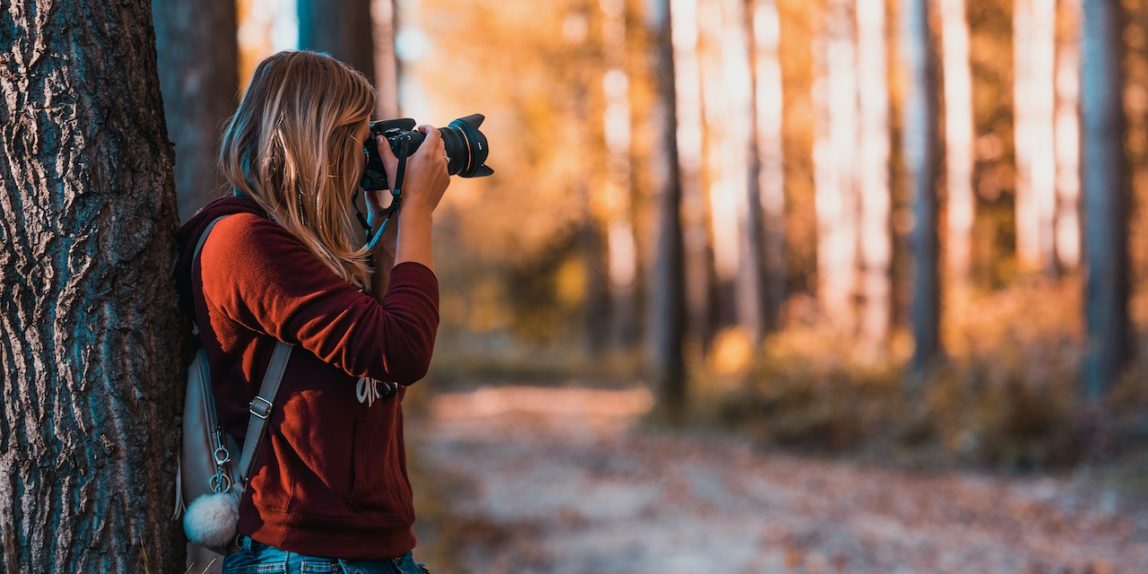While the goal of photography—capturing an image—is the same across all types, different equipment and skills are required for each individual discipline. For example, those who specialize in portrait photography need to be adept at making their subjects feel comfortable and know how to convey tone and emotion through lighting, backdrop, and the way the subject is posed. Sports photographers, meanwhile, should be familiar with the sport they are shooting so they can be in prime position to capture the most dynamic shots. They must also have long, heavy lenses capable of zooming in on the play from the sidelines.
Landscape photographers, in hopes of capturing the perfect image, should be creative and strategic planners who know how to utilize natural lighting to their advantage. Professionals often use a wide-angle zoom lens between 17-35 mm and a tele-zoom lens between 70-200mm.
Many landscape photographers enjoy shooting urban scenes and cityscapes, while others specialize in images of mountains, forests, deserts, and other compositions that evoke the beauty and grandeur of the natural world. While any landscape can be fun to shoot, there are a few popular “bucket-list” destinations that many landscape photographers dream of capturing. With that in mind, here are five of the most stunning destinations in the world to shoot landscape photography.
Antarctica
It’s one of the least accessible destinations in the world, but landscape photographers often dream of a visit to Antarctica. The southernmost continent can be reached within 48 hours in the summer from tourist ships departing from Ushuaia, Argentina. Prospective visitors can also take a two-hour flight from Punta Arenas, Chile, to King George Island and then travel to Antarctica via ship. Visitors require a permit and must follow all rules laid out in the Antarctic Conservation Act.
Be sure to have your camera and any other equipment ready when crossing the Drake Passage from South America. This is considered among the world’s roughest seas and presents opportunities to capture dramatic waves, big open skies, and large icebergs, sometimes all in the same photo. Upon arriving at the remote continent, expect to see more colossal icebergs as well as wildlife like seals, whales, seabirds, and penguin colonies. Marvel at how the light takes on interesting qualities against a backdrop of white ice, grey rock, and dark blue seas.
Greenland
Greenland is another relatively remote location that offers an abundance of opportunities for landscape photographers. The best time to visit the Kingdom of Denmark island country is during the summer, when the glowing midnight sun overlooks the Greenland Sea, presenting an arresting natural landscape shot. There’s plenty of large icebergs varying in size and shape, as well as nearby remote Inuit settlements and an array of wildlife, including sea eagles, whales, polar bears, and musk oxen. The diversity of wildlife provides endless opportunities for photographers interested in capturing animals in the wild.
Two particularly photogenic destinations in Greenland to visit are Scoresby Sound and Disko Bay. Scoresby Sound, located off the east coast, usually features plenty of icebergs wading through still waters in front of glaciers and mountains. Disko Bay, on the west coast and 250 kilometers north of the Arctic Circle, features the UNESCO World Heritage Site Ilulissat Icefjord. This tidal fjord is part of the Sermeq Kujalleq, which is among the world’s fastest and most active glaciers.
Patagonia
A region spanning parts of Argentina and Chile, Patagonia is a photographer’s paradise with awe-inspiring mountain peaks, vast icefields, windswept grassy steppes, and glaciers. Los Cuernos’ soaring granite peaks serve as a dramatic backdrop, while Lake Pehoe’s luminescent blue hue offer a study in color. The Perito Moreno Glacier and the mountains of Cerro Torre and Fitz Roy are also photogenic landscape photography subjects.
For those looking to incorporate wildlife into their landscape photos, check out Torres del Paine National Park, which is home to puma, guanaco, the South Andean deer, and hundreds of bird species.
Baja Peninsula in Mexico
The Baja Peninsula in Mexico is a 775-mile land mass surrounded by the Pacific Ocean on the west and hugging the Gulf of California on the east. It features more than 14 million acres of protected land and is home to national parks like Sierra de San Pedro Mártir, which features the 10,154-foot Picacho del Diablo. Baja offers mountainous views from all angles and features more than 2,000 miles of jagged coastline. This juxtaposition of rugged peaks against the sea offers endless opportunities for the landscape photographer interested in natural contrasts.
“I’ve always been drawn to desert landscapes for their stark, surreal beauty and rich, warm light. In my experience, these elements reach a climax in the Sonoran Desert environment of the Baja Peninsula,” photographer James Kay told OutdoorPhotographer.com, summing up the region’s appeal.
Faroe Islands
This North Atlantic Ocean archipelago offers dramatic, windswept scenery that is perfect for landscape photography. Most notably, the islands feature sloping mountains, beautiful fjords, and soaring cliffs at which waterfalls descend into the ocean below. There are also colorful lighthouses and quaint villages huddled around harbors, as well as wildlife such as sheep, puffins, and Arctic terns.
